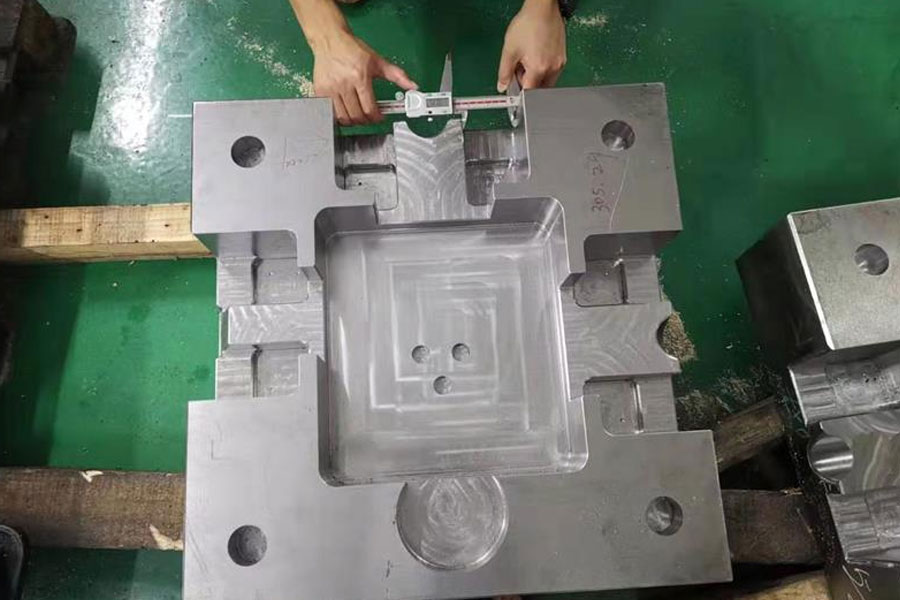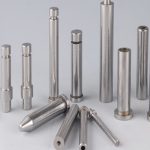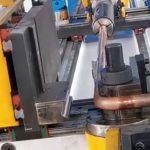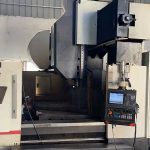Shaped Product Appearance, Size, Fit
- 1. No defects are allowed on the product surface: lack of material, burnt, top white, white line, peaking, blistering, whitening (or cracking, breaking), baking, and wrinkles.
- 2. Weld mark: Generally, the length of circular perforation weld mark is not more than 5mm, and the length of special-shaped perforation weld mark is less than 15mm, and the weld mark strength can pass the functional safety test.
- 3. Shrinkage: Shrinkage is not allowed in obvious areas, and slight shrinkage is allowed in unobvious areas (no dents in the hand).
- 4. Generally, the flatness of small products is less than 0.3mm. If there are assembly requirements, the assembly requirements must be guaranteed.
- 5. There should be no air lines or material flowers in the obvious appearance, and the product should generally not have air bubbles.
- 6. The geometric shape and dimensional accuracy of the product should meet the requirements of the official and effective mold drawing (or 3D file). The product tolerance should be based on the tolerance principle. The shaft size tolerance is a negative tolerance, and the hole size tolerance is a positive tolerance. Customers have As required, as required.
- 7. Product wall thickness: The product wall thickness is generally required to be average wall thickness, non-average wall thickness should meet the requirements of the drawing, and the tolerance should be -0.1mm according to the characteristics of the mold.
- 8. Product coordination: the surface shell and the bottom shell are matched-the surface misalignment is less than 0.1mm, and there should be no scratching. The holes, shafts and surfaces that have the matching requirements must ensure the matching interval and use requirements.
Mold Appearance
- 1. The nameplate of the mold is complete, the characters are clear, and the arrangement is neat.
- 2. The nameplate should be fixed on the mold foot close to the template and the reference angle. The nameplate is reliable and not easy to peel off.
- 3. The cooling water nozzle should be made of plastic block plug. If the customer requires otherwise, please follow the requirements.
- 4. The cooling water nozzle should not protrude from the surface of the mold base.
- 5. The cooling water nozzle needs to be processed with counterbore, the counterbore diameter is 25mm, 30mm, 35mm three specifications, the orifice is chamfered, the chamfer should be the same.
- 6. The cooling water nozzle should have entry and exit marks.
- 7. Mark English characters and numbers should be greater than 5.
- 8. The position is 10mm directly below the tap, and the writing should be clear, beautiful, neat and evenly spaced.
- 9. Mould accessories should not affect the hoisting and storage of moulds. During installation, there are exposed oil cylinders, faucets, pre-reset mechanism, etc., which should be protected by supporting legs.
- 10. The installation of the support leg should be fixed on the mold base with screws passing through the support leg, and the excessively long support leg can be fastened to the mold base with a machined external threaded column.
- 11. The size of the ejector hole of the mold should meet the requirements of the specified injection molding machine. Except for small molds, one center cannot be used for ejection.
- 12. The positioning ring should be fixed and reliable. The diameter of the ring is 100mm and 250mm. The positioning ring is 10-20mm higher than the bottom plate. Unless otherwise requested by customers.
- 13. The external dimensions of the mold should meet the requirements of the designated injection molding machine.
- 14. For molds with orientation requirements, an arrow should be used to indicate the installation direction on the front template or the rear template. There should be “UP” next to the arrow. The arrow and text are both yellow and the height of the text is 50 mm.
- 15. The surface of the mold base should not have pits, rust marks, redundant rings, water vapor in and out, oil holes, etc., and defects that affect the appearance.
- 16. Moulds should be easy to hoist and transport. Mould parts must not be disassembled during hoisting. Lifting rings must not interfere with faucets, oil cylinders, pre-reset rods, etc.
Mold Material And Hardness
- 1. The mold base should be a standard mold base that meets the standard.
- 2. The material of mold forming parts and gating system (core, movable and fixed mold insert, movable insert, diversion cone, push rod, sprue bushing) is made of materials with performance higher than 40Cr.
- 3. When molding plastics that are easy to corrode to the mold, the molded parts should be made of corrosion-resistant materials, or the molding surface should take anti-corrosion measures.
- 4. The hardness of the moulded parts should not be lower than 50HRC, or the hardness of the surface hardening treatment should be higher than 600HV.
Mold Out, Reset, Pull Out The Core, Take Part
- 1. The ejection should be smooth, without jamming, and without abnormal sound.
- 2. The inclined top surface should be polished, and the inclined top surface is lower than the core surface.
- 3. The sliding parts should be provided with oil grooves, and the surface needs to be nitrided, and the surface hardness after treatment is above HV700.
- 4. All ejector rods should have stop rotation positioning, and each ejector rod should be numbered.
- 5. The ejection distance should be limited by a limit block.
- 6. Standard parts should be used for the return spring, and both ends of the spring should not be polished or cut off.
- 7. Slider and core-pulling should have stroke limit, small slide is limited by spring, if spring is inconvenient to install, corrugated screw can be used; cylinder core-pulling must have a stroke switch.
- 8. Generally, inclined guide posts are used for core pulling of sliders, and the angle of the inclined guide posts should be 2°-3° smaller than the angle of the locking surface of the slider. If the stroke of the slider is too long, the oil cylinder should be used for drawing.
- 9. When the end surface of the core-pulling forming part of the cylinder is covered, the cylinder should be equipped with a self-locking mechanism.
- 10. There should be wear-resistant plates under the large sliders with a slider width of more than 150mm. The wear-resistant plate material should be T8A, and the hardness after heat treatment is HRC50-55. The wear-resistant plate is 0.05-0.1 mm higher than the large surface. Oil making tank.
- 11. The ejector rod should not move up and down.
- 12. Add barbs on the top rod, and the direction of the barbs should be consistent, so that the barbs are easy to remove from the product.
- 13. The matching gap between the ejector pin hole and the ejector pin, the length of the sealing section, and the surface roughness of the ejector pin hole should be in accordance with the requirements of the relevant enterprise standards.
- 14. The product should be convenient for the operator to remove it.
- 15. When the product is ejected, it is easy to follow the inclined top, and the top rod should be grooved or etched.
- 16. The top block fixed on the top rod should be firm and reliable, the non-formed parts around the circumference should be processed with a 3°-5° slope, and the lower periphery should be chamfered.
- 17. There should be no iron filings in the oil passage hole on the mold base.
- 18. The end face of the return rod is flat and there is no spot welding. No gasket at the bottom of the embryo head, spot welding.
- 19. The gate plate of the three-plate mold slides smoothly, and the gate plate is easy to open.
- 20. Three-plate mold limit rods should be arranged on both sides of the mold installation direction, or pull plates should be added to the mold base to prevent the limit rods from interfering with the operator.
- 21. The oil circuit and air passage should be smooth, and the hydraulic ejector reset should be in place.
- 22. An exhaust port should be opened at the bottom of the guide sleeve.
- 23. There should be no gap in the positioning pin installation.
Cooling And Heating System
- 1. The cooling or heating system should be fully unblocked.
- 2. The seal should be reliable, the system should not leak under the pressure of 0.5MPa, and it is easy to repair
- 3. The size and shape of the sealing groove opened on the mold base should meet the requirements of relevant standards.
- 4. Grease should be applied to the sealing ring when it is placed, and it should be higher than the surface of the mold base after it is placed.
- 5. Water and oil flow channel separators should be made of materials that are not easily corroded.
- 6. The front and rear molds should adopt a centralized water supply method.
Gating System
- 1. The gate setting should not affect the appearance of the product and satisfy the product assembly.
- 2. The runner section and length should be designed reasonably, and the process should be shortened as much as possible under the premise of ensuring the forming quality, and the cross-sectional area should be reduced to shorten the filling and cooling time. At the same time, the plastic loss of the pouring system should be the least.
- 3. The partial cross section of the three-plate mold runner at the back of the front mold plate should be trapezoidal or semicircular.
- 4. The three-plate mold has a material breaker on the gate plate, the diameter of the gate entrance should be less than 3mm, and the ball head has a 3mm deep step recessed into the gate plate.
- 5. The ball-end pull rod should be reliably fixed, can be pressed under the positioning ring, can be fixed with headless screws, or can be pressed with a pressure plate.
- 6. The gates and runners should be machined according to the size requirements of the drawings, and manual grinding and polishing machines are not allowed.
- 7. The point gate should be in accordance with the requirements of the specification.
- 8. There should be an extension at the front end of the runner as a cold slug hole.
- 9. The Z-shaped inverted buckle of the pulling rod should have a smooth transition.
- 10. The runner on the parting surface should be round, and the front and rear molds should not be misaligned.
- 11. The latent gate on the ejector rod should have no surface shrinkage.
- 12. The diameter and depth of the cold material cavity of transparent products should meet the design standards.
- 13. The handle is easy to remove, there is no gate mark on the appearance of the product, and there is no residual handle at the product assembly.
- 14. For the curved hook latent gate, the two parts of the insert should be nitrided, and the surface hardness can reach HV700.
Molding Part, Parting Surface, Exhaust Groove
- 1. There should be no unevenness, pits, rust and other defects affecting the appearance on the surface of the front and rear molds.
- 2. The insert is matched with the mold frame, and there should be a gap of less than 1mm around the rounded corners.
- 3. The parting surface is kept clean and tidy. There is no portable grinding wheel to avoid the air, and the sealing part has no dents.
- 4. The depth of the exhaust groove should be less than the overflow value of the plastic.
- 5. The research and distribution of inserts should be in place, with smooth placement and reliable positioning.
- 6. The inserts, inserts, etc. should be reliably positioned and fixed, the round pieces should be prevented from rotating, and there should be no copper or iron pads under the inserts.
- 7. The end face of the ejector rod is consistent with the core.
- 8. The forming part of the front and rear molds has no defects such as undercuts and chamfers.
- 9. The ribs should be pushed out smoothly.
- 10. For products of multi-cavity molds, the left and right parts are symmetrical, and L or R should be indicated. If the customer has requirements for position and size, it should meet customer requirements. Generally, add it where it does not affect the appearance and assembly, and the font size is 1/8 .
- 11. The clamping surface of the mold base should be in place, and more than 75% of the area should be touched.
- 12. The ejector rod should be arranged closer to the side wall and beside the ribs and bosses, and a larger ejector rod should be used.
- 13. The numbers 1, 2, 3, etc. should be indicated for the same parts.
- 14. Each contact surface, penetrating surface, and parting surface should be researched and matched in place.
- 15. The parting surface sealing part should meet the design standards. 10-20mm for medium-sized molds and 30-50mm for large-scale molds, and the remaining parts are machined to avoid empty spaces.
- 16. The skin texture and sandblasting should meet customer requirements evenly.
- 17. For products with requirements for appearance, the screws on the products should have anti-shrink measures.
- 18. Jacking pipes should be used for screw columns with a depth of more than 20mm.
- 19. The wall thickness of the product should be uniform, and the deviation should be controlled below ±0.15mm.
- 20. The width of the ribs should be less than 60% of the wall thickness of the exterior surface.
- 21. The core inserts on the inclined roof and the slider should have a reliable fixing method.
- 22. The front mold is inserted into the rear mold or the rear mold is inserted into the front mold. The surroundings should be locked with inclined surfaces and machined to avoid air.
Injection Molding Production Process
- 1. The mold should have the stability of injection molding production and the repeatability of process parameter adjustment within the range of normal injection molding process conditions.
- 2. The injection pressure during injection molding production should generally be less than 85% of the maximum rated injection pressure of the injection molding machine.
- 3. The injection speed of the mold during injection molding production, the injection speed of the three-quarter stroke is not less than 10% of the rated maximum injection speed or more than 90% of the rated maximum injection speed.
- 4. The holding pressure during injection molding production should generally be less than 85% of the actual maximum injection pressure.
- 5. The clamping force during injection molding production should be less than 90% of the rated clamping force of the applicable model.
- 6. During the injection molding production process, the product and nozzle material should be taken out easily and safely (the time is generally not more than 2 seconds each).
- 7. For molds with inserts, the inserts are easy to install and the inserts are fixed reliably during production.
Packing And Shipping
- 1. The mold cavity should be cleaned and sprayed with anti-rust oil.
- 2. The sliding parts should be coated with lubricating oil.
- 3. The inlet of the sprue bushing should be sealed with grease.
- 4. The mold should be equipped with a clamping piece, and the specifications meet the design requirements.
- 5. Spare parts and wearing parts should be complete, with a detailed list and the name of the supplier.
- 6. Sealing measures should be taken to prevent foreign matter from entering the mold water, liquid, gas, and electrical inlets and outlets.
- 7. Spray paint on the outer surface of the mold, as required by the customer.
- 8. Moulds should be packaged with moisture-proof, water-proof and anti-collision packaging, and customers have requirements according to their requirements.
- 9. Mold product drawings, structural drawings, cooling and heating system drawings, hot runner drawings, spare parts and mold material supplier details, operating instructions, mold test report, factory inspection certificate, and electronic documents should be complete.
Link to this article:The Standards List For Mold Manufacturing Acceptance
Reprint Statement: If there are no special instructions, all articles on this site are original. Please indicate the source for reprinting:https://www.cncmachiningptj.com/,thanks!
 3, 4 and 5-axis precision CNC machining services for aluminum machining, beryllium, carbon steel, magnesium, titanium machining, Inconel, platinum, superalloy, acetal, polycarbonate, fiberglass, graphite and wood. Capable of machining parts up to 98 in. turning dia. and +/-0.001 in. straightness tolerance. Processes include milling, turning, drilling, boring, threading, tapping, forming, knurling, counterboring, countersinking, reaming and laser cutting. Secondary services such as assembly, centerless grinding, heat treating, plating and welding. Prototype and low to high volume production offered with maximum 50,000 units. Suitable for fluid power, pneumatics, hydraulics and valve applications. Serves the aerospace, aircraft, military, medical and defense industries.PTJ will strategize with you to provide the most cost-effective services to help you reach your target,Welcome to Contact us ( [email protected] ) directly for your new project.
3, 4 and 5-axis precision CNC machining services for aluminum machining, beryllium, carbon steel, magnesium, titanium machining, Inconel, platinum, superalloy, acetal, polycarbonate, fiberglass, graphite and wood. Capable of machining parts up to 98 in. turning dia. and +/-0.001 in. straightness tolerance. Processes include milling, turning, drilling, boring, threading, tapping, forming, knurling, counterboring, countersinking, reaming and laser cutting. Secondary services such as assembly, centerless grinding, heat treating, plating and welding. Prototype and low to high volume production offered with maximum 50,000 units. Suitable for fluid power, pneumatics, hydraulics and valve applications. Serves the aerospace, aircraft, military, medical and defense industries.PTJ will strategize with you to provide the most cost-effective services to help you reach your target,Welcome to Contact us ( [email protected] ) directly for your new project.
Link to this article:The Standards List For Mold Manufacturing Acceptance
Reprint Statement: If there are no special instructions, all articles on this site are original. Please indicate the source for reprinting:Alloy Wiki,thanks!^^








